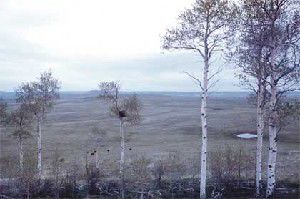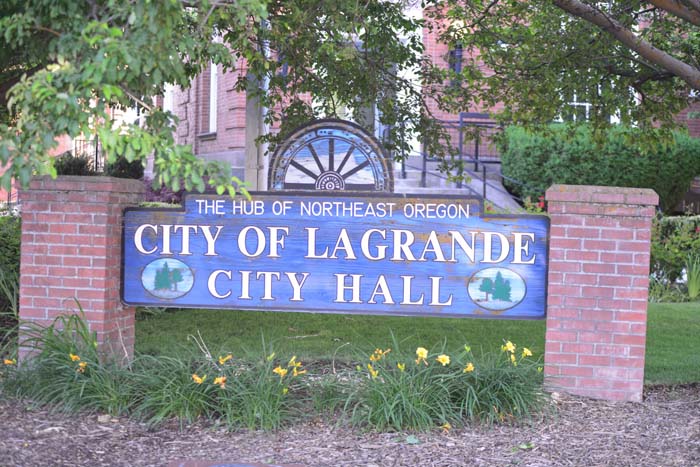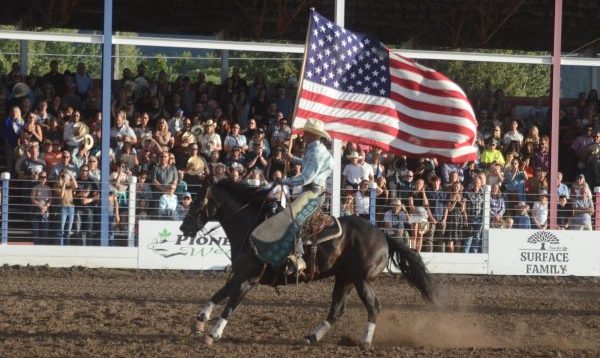Zumwalt
Published 5:00 pm Wednesday, June 22, 2005

- A multitude of animals and plants combine to make the great grassland of Wallowa County a scenic and productive place<I><BR>photo by E.H. Van Blaricom</I>
There has been quite a lot of publicity the last few years about The Nature Conservancy’s land holdings on the Zumwalt Prairie. They do own several sections on the eastern edge of the prairie, but this writer is leaving them out of this story because they are primarily interested in preservation, restoration and public relations.
I am going to write about the success story of the vast rolling hills northeast of Enterprise which can be called the Greater Zumwalt Grassland. It takes in an area from the Crow Creek watershed, east to the breaks of the Imnaha Canyon, and north to the forest lands of the Chesnimnus Creek watershed.
Trending
Whether it’s called the Palouse Prairie or Zumwalt Prairie is irrelevant. My old neighbor, Verne Anderson, who ran his cattle out there most of his life, simply called it “The Hills.” Unlike the Conservancy, which keeps a handful of people to manage its holdings, there are 40 ranching families that derive a large share of their livelihood from these grasslands, totaling 138,000 acres. That’s over 200 square miles, and it’s nearly all in private ownership.
About 9,500 head of range cattle graze there from May to December. Since there are approximately 27,000 head of beef cattle in the Wallowa Valley, that equals a little over one-third of all the beef cattle in Wallowa county.
Among these 40 ranch owners are many well known family names in the county and a group called the Elk Mountain Grazing Association.
However, the economic value of this region is not the only success story to be told. There is an even more outstanding impact that has evolved from the grazing of this prairie. The Greater Zumwalt Grassland is one of the best-functioning ecosystems in all of Eastern Oregon. The ranchers have been aware of this for a long time, but most of the public haven’t been told the story of what’s going on out there. After all, ranchers don’t have a P.R. staff.
“The Prairie Keepers”A little over 10 years ago, an Oregon State University student, Marcy Houle, did her thesis on why the Zumwalt grasslands were home to one of the largest breeding populations of Buteo hawks in North America. She wrote a very interesting and informative book entitled “The Prairie Keepers” after spending two summers here, quite often camping out in a tent alone to study and document the reasons for this high density of raptors, mostly Redtail, Ferruginous and Swainson’s hawks.
Houle’s final conclusions, after her intensive study and observations, were very complimentary to the ranchers on the prairie. The first thing she learned was how wrong her professors were when they told her what to expect when she came to Wallowa County. They warned her that ranchers shoot every hawk on sight because they’re “chicken hawks,” and she would get no cooperation from these cowboys because they didn’t trust strangers.
Trending
All of this turned out to be false. The ranchers welcomed her to camp on their land and she was surprised that many of them already knew where the hawk nests were on their land. Above all, the ranchers never killed hawks because they helped to keep the rodents under control.
Houle’s book is well worth reading, but it would have been better if she hadn’t fictionalized parts of it with hints of romance with a rancher’s son, and a story about “a black bull with huge horns and a ring in his nose” that chased her out of the pasture where she got over the fence just in time to save her life. I wouldn’t expect her to know that Black Angus bulls don’t have horns, and in 36 years in Wallowa County I’ve never seen a range bull with a ring in his nose. Another misrepresentation was in describing the local ODFW biologists – giving them fictitious names, but providing enough detail to make them recognizable to a local – as wanting her to fail. Even so, this is just my personal critique of her book, and should not detract from Houle’s outstanding research .
Grazing practices evolveI’m not going to get into the history of the Zumwalt grasslands, as that would require an article twice as long as this one, except to say these pastures could never have been fully utilized before the invention of Caterpillar tractors. These bulldozers enabled the ranchers to build stock ponds all over the landscape. Wherever there was a frog wallow or a catch basin to hold runoff from rain or snow, a pond was dug, often with a subsidy from the U.S. Natural Resources Conservation Service. These water holes allowed grazing throughout dry summers and their locations permitted more uniform grazing.
In spite of what many of the more extreme environmentalists claimed, these ranchers almost never overgrazed the range. The proof of that is in the fact that the original Palouse Prairie grasses still dominate the landscape on the Zumwalt grassland after over 100 years of grazing. If the land had been abused it would have long ago been taken over by invasive species of grass, forbs and noxious weeds. There are some nonnative species that have appeared, but most of these were brought in by the earlier settlers. These are smooth brome, Kentucky bluegrass, timothy and a couple kinds of wheatgrass. But these are all palatable forage grasses. The Zumwalt prairie is surprisingly free of cheatgrass, which has invaded almost everywhere else. There are also a few forbs, some of which cows eat and some they avoid, plus there are areas where low shrubs grow, such as snowberry, sweetbriar (wild rose) and ninebark.
Observing the ecosystemGrazing cattle keep the grass short and succulent. There is a little nuisance rodent out there named the Belding ground squirrel. They live in numerous colonies, much like the prairie dogs of the Dakotas. Because they can’t handle mature grass, they only thrive where the grass is short. These squirrels emerge from hibernation in early spring and promptly produce an underground litter of six or seven babies. It is commonly stated that 50 of these squirrels will eat or destroy the equivalent of what one beef cow will consume.
These little varmints make up the primary prey base for all of Houle’s hawks during the nesting season. The hawks time their broods to hatch at the exact same time all these baby squirrels come out to expand all over the prairie. The hawks, with their keen vision and sharp talons, find these vulnerable young squirrels easy pickings, so one might say they raise their chicks on the “Belding Diet.”
Nor are the Buteo hawks the only predators on the prairie who feed on these squirrels. Eagles, harriers, falcons, owls, ravens and magpies take their toll. There are also predators in the animal kingdom who use this prey base, namely coyotes, badgers, bobcats and weasels. Other rodents in the prey base are marmots, gophers and mice.
To a lesser extent, deer and elk take advantage of the more succulent forage and help themselves to the salt and pond water. These ponds also attract mallard ducks, three species of teal, snipes and sandpipers. Among the songbirds that are abundant on the prairie are meadowlarks, horned larks, redwings, Brewers blackbirds and several species of field sparrows.
Productive streamsOne cannot leave out the importance of the aquatic life on the northern and western perimeter of the Greater Zumwalt grasslands. At the Birkmaier ranch in the northwest corner of the prairie there are three streams that come together. Elk Creek, Crow Creek and Chesnimnus Creek all converge to become Joseph Creek. All of these creeks are steelhead spawning streams and hold native rainbow trout. They are also habitat for beaver, otter, mink and raccoons.
As a connoisseur of wildlife, I have been an observer of the Zumwalt ecosystem for 36 years and although there have been several changes in ownership on these private lands, there has been no noticeable change in the wildlife dynamics there. That tells us that it is a stable functioning ecosystem, which is an example of what every environmentalist dreams about – a balance of nature on a grassland habitat.









